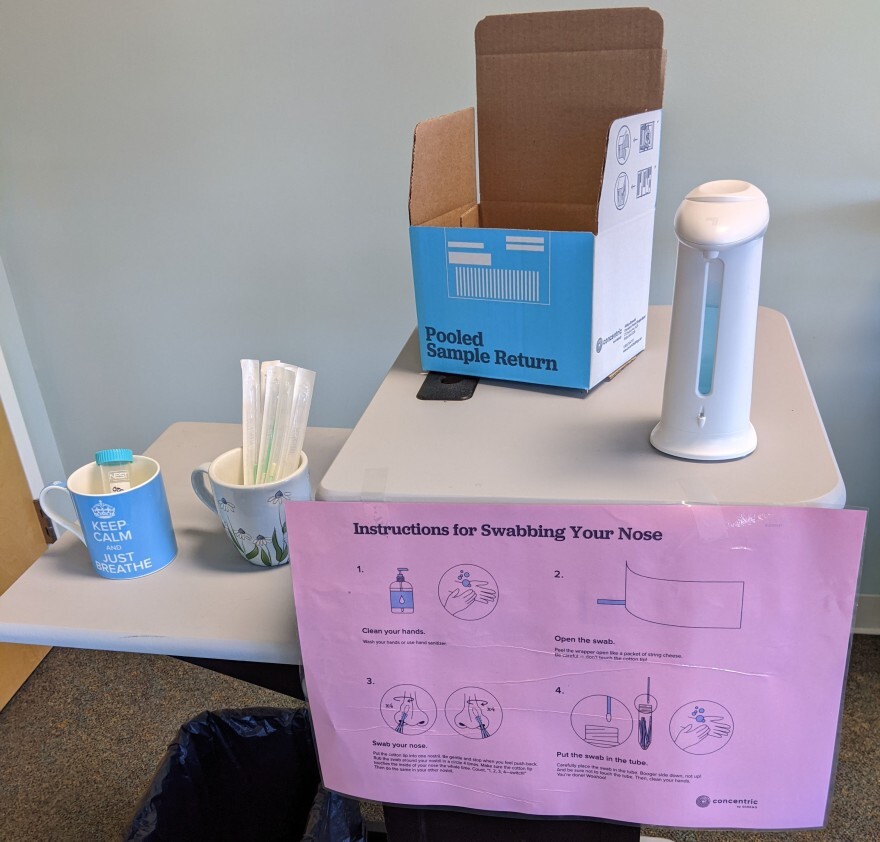Despite Early Challenges, Maine Schools Hope Pooled Testing Will Keep Kids In The Classroom

A pooled testing station in RSU 34, which serves Old Town, Alton and Bradley, Maine. (Courtesy Jon Doty/RSU 34)
As Maine schools enter their third pandemic-affected year, they have a new tool that officials are hoping will lead to fewer interruptions. It’s called “pooled testing” and is designed to identify COVID-19 cases early, and keep more students in the classroom. But in some districts, a shortage of labor and supplies has already challenged those efforts.
On the steps outside of Clinton Elementary School, sixth-grader Wyatt Hanson rips open a tiny plastic bag and pulls out a thin testing swab, just a few inches long.
“You open the package, grab it from the tip. And you have a little white end on it. And all you have to do is put it where you’re comfortable,” Hanson said, showing off the swab’s white tip.
Hanson said he was nervous the first time he stuck a swab in his nose, because an earlier COVID-19 test had brought tears to his eyes.
“This was a lot better than those ones,” he said. “Because you just have to put it in where you’re comfortable — swirl it four times in both nostrils. And then you’re done.”
The swab is then placed in a vial with a handful of other swabs from students. From there, those groups of swabs — or pools — are sent to labs, and their results are returned in a day or two. If it comes back positive, more testing is done.
It’s a process playing out every week in hundreds of classrooms across Maine — all part of a strategy that local and state officials hope will isolate cases and keep kids like Wyatt in school, even in the face of a COVID-19 surge this fall.
